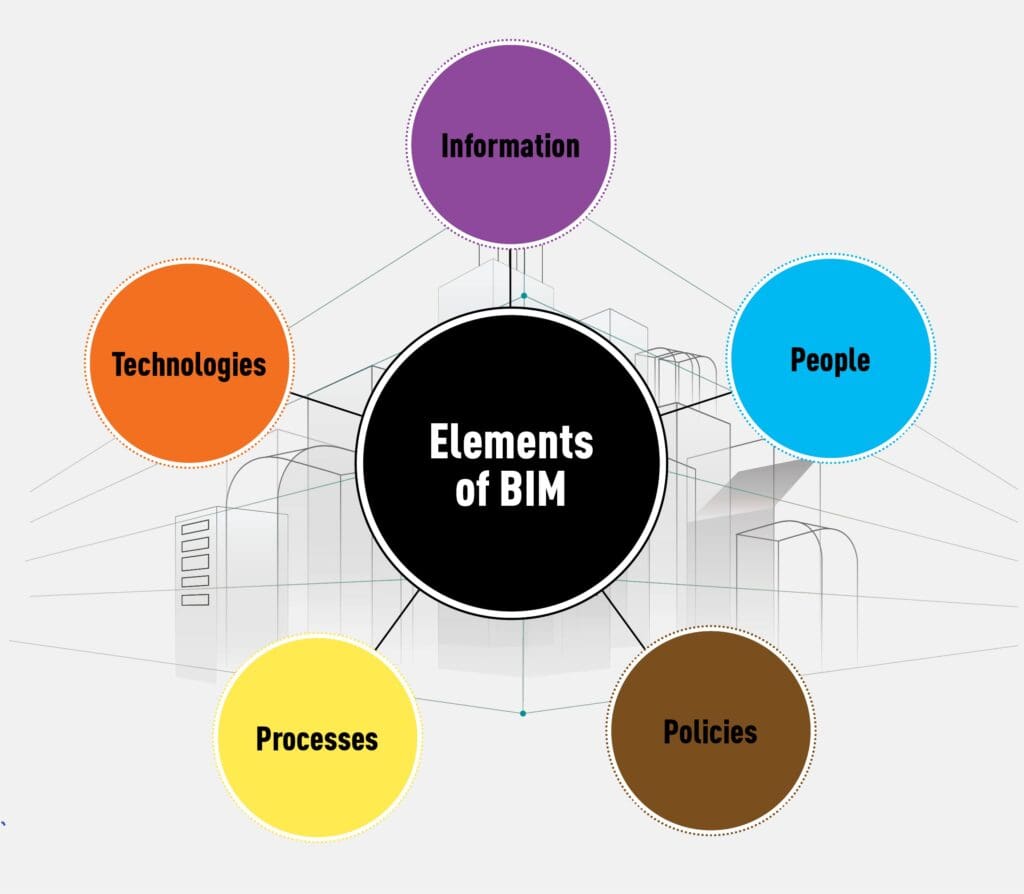Tracking Construction and Operations Throughout the Lifecycle
In today’s fast paced construction industry, managing a building’s lifecycle, from initial design to operations and maintenance, requires advanced tools and strategies. One of the most effective ways to achieve this is through Building Information Modeling (BIM) and the wealth of data it generates. Advanced BIM solutions not only enhance the design and construction processes but also play a crucial role in the long term management of a building. In this blog, we’ll explore how building data helps track a building through construction and operations during its lifecycle.
The Importance of Building Data
Building data encompasses a variety of information related to a structure, including dimensions, materials, systems, and performance metrics. This data is captured and organized throughout the lifecycle of the building, providing stakeholders with critical insights that can drive better decision making.
1. Enhanced Construction Tracking
During the construction phase, BIM serves as a central repository for all project data. By integrating various aspects of the build, such as schedules, costs, and materials, stakeholders can track progress in real time. This capability enables:
- Real Time Monitoring: Project managers can monitor construction activities, ensuring that timelines and budgets are adhered to.
- Issue Identification: Any discrepancies or delays can be quickly identified, allowing for timely interventions and adjustments.
- Collaboration: With all data in one place, team members can easily share updates and coordinate efforts, fostering better collaboration among contractors, architects, and engineers.
2. Seamless Transition to Operations
Once construction is complete, the transition to operations can often be challenging. However, with comprehensive building data captured during the construction phase, this process can be significantly streamlined. Key benefits include:
- Accurate As Built Models: The detailed data collected in BIM allows for the creation of accurate as built models, which are essential for facility management.
- Efficient Handover: Facilities teams receive all necessary information about building systems, maintenance schedules, and warranties, ensuring a smoother handover and quicker onboarding.
3. Lifecycle Management and Maintenance
Building data continues to play a vital role throughout the operational phase of a building’s lifecycle. Advanced BIM solutions enable effective management of maintenance and operational tasks by providing:
- Predictive Maintenance: By analyzing data from building systems, such as HVAC and lighting, facility managers can predict when maintenance is needed before issues arise, reducing downtime and costs.
- Performance Monitoring: Continuous monitoring of building performance metrics helps identify areas for improvement, optimizing energy efficiency and occupant comfort.
- Data Driven Decisions: Access to comprehensive data allows facility managers to make informed decisions regarding upgrades, retrofits, or even renovations, ensuring that the building remains functional and efficient over time.
4. Sustainability and Regulatory Compliance
Building data also plays a crucial role in achieving sustainability goals and meeting regulatory requirements. With accurate information at their fingertips, stakeholders can:
- Track Energy Use: Detailed data on energy consumption can help identify trends and areas for energy saving improvements.
- Manage Resources: Real time data on resource use allows for more efficient management of water, electricity, and materials.
- Ensure Compliance: Building data can simplify the process of ensuring compliance with local regulations and sustainability certifications, making it easier to meet both legal and environmental standards.
Conclusion
The integration of building data through advanced BIM solutions offers unparalleled benefits in tracking a building’s construction and operational phases throughout its lifecycle. By providing a centralized repository of information, stakeholders can enhance collaboration, streamline transitions, and make informed decisions that optimize building performance.
As the construction industry continues to evolve, embracing advanced BIM technologies and harnessing the power of building data will be key to achieving greater efficiency, sustainability, and success.

